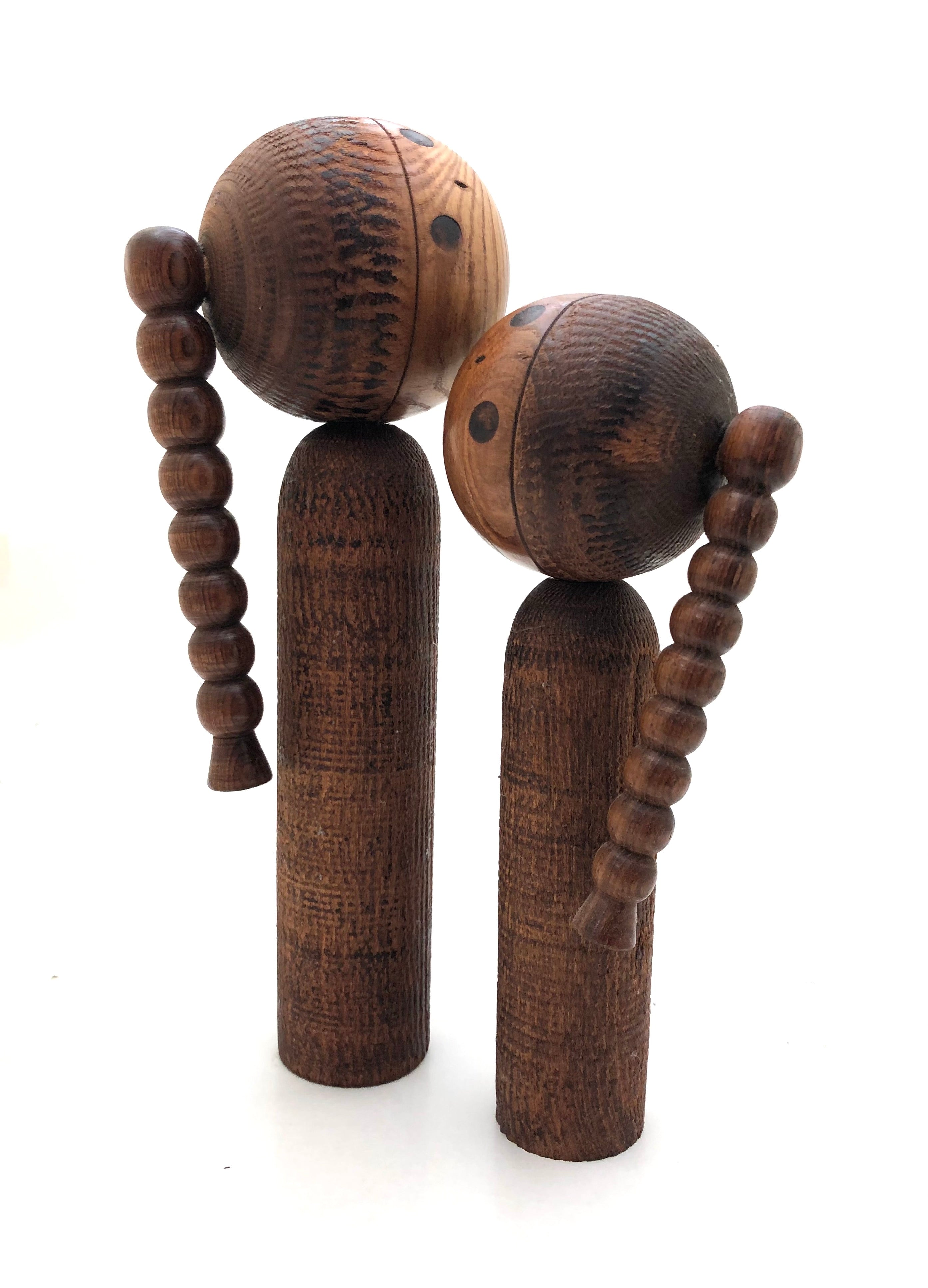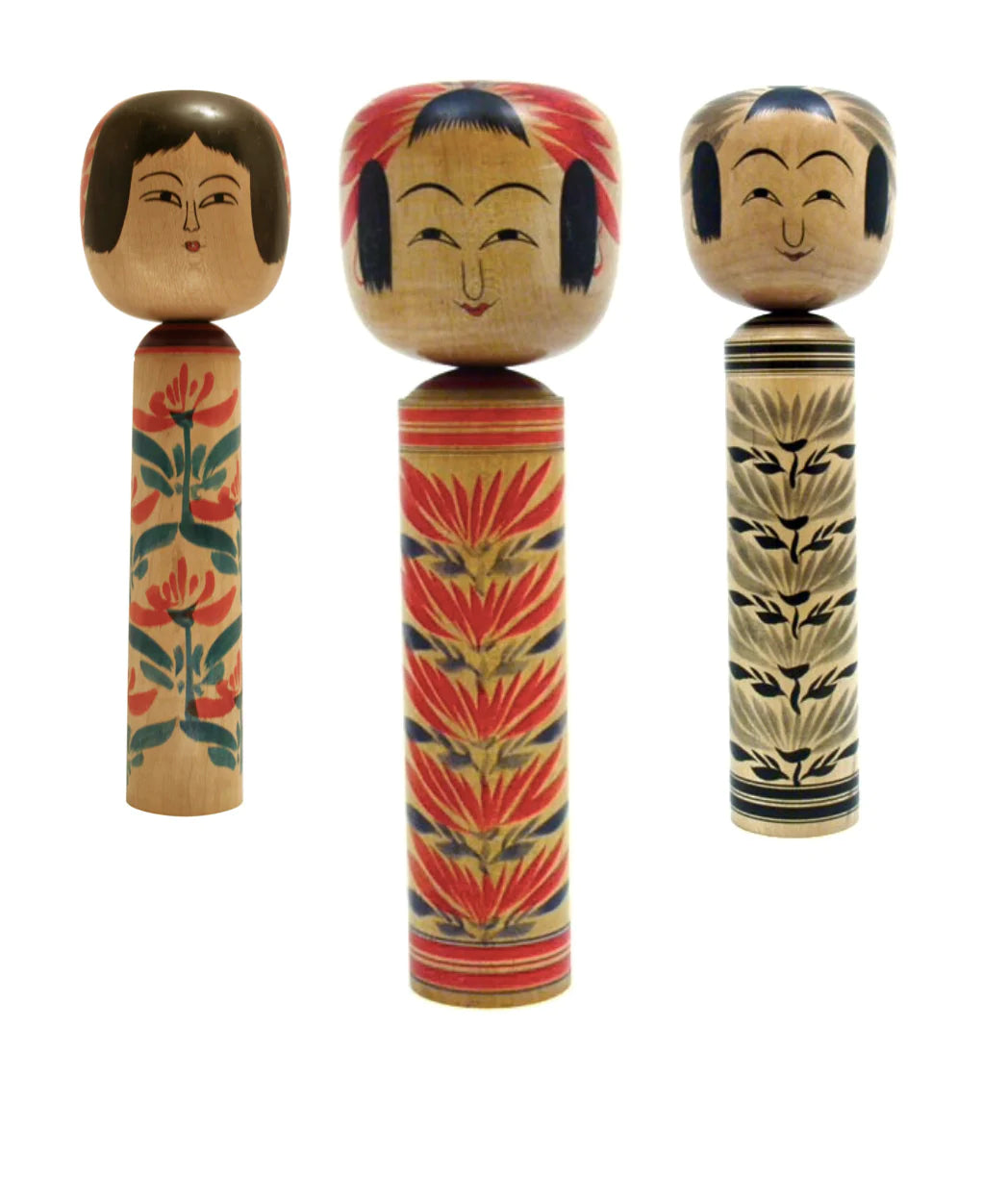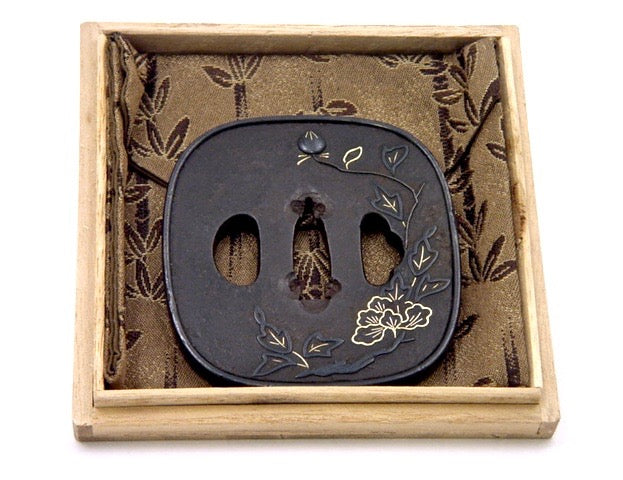
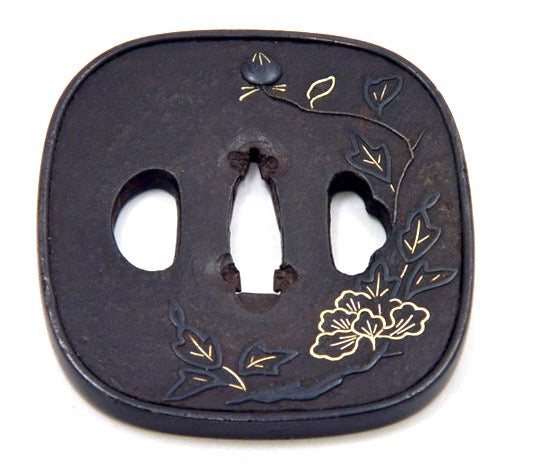
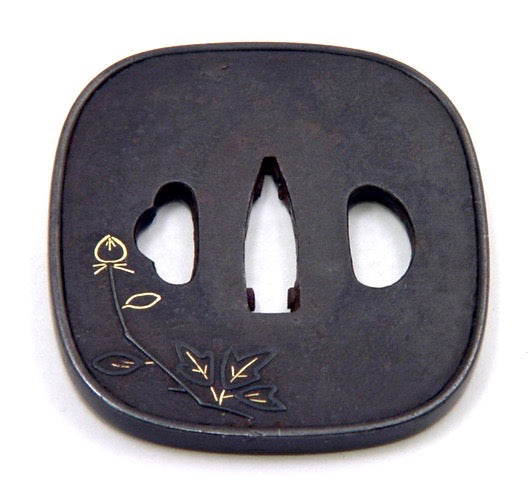
Japanese Iron Tsuba | Sword Guard with Peony Motif
All our items ship free in the US
Dimensions: 2-5/8” x 2-3/4”
This Tsuba is made of Iron, with relief carving on both the front and back of the piece and inlaid with gold leaves and a raised Peony plant with an open flower and Peony Bud. On the reverse is a smaller, gold inlaid Peony Bud & plant. There is the standard Kozuka Hitsu-ana on the left side and a Kogai Hitsu-ana on the right. In the center is the standard Nakago-ana, with no fillers. The decoration is of a sparse, elegant form, arranged along the sides in order to preserve the large expanse of carefully forged and patinated metal. The piece has an elegant and simple Mimi (rim). This piece is in its original Kiri wood box and silk case. The piece is unsigned and in excellent condition.
Vintage Condition: Excellent, complete set as originally made. “As is” with no effects from aging, and retains the original craft/workmanship. By running one’s hand over the piece, one can feel the texture of how the craftsman lays each piece onto the metal of the tsuba, thus treating it as a painter’s canvas. Any discoloration, chipping/cracking, surface wear, or structural damage noted.
NOTE: The Samurai sword or Bushi, have long fascinated people around the world. They have been a symbol of nobility and honor for Japanese warriors of ancient times, and are still considered to be one of the most essential tools in martial arts history.
A tsuba is a handguard mounted on the Japanese sword. It serves to keep the user's hand from sliding up onto the blade of the sword, to counterbalance the weight of the blade, to communicate the social standing, beliefs, and tastes of its owner, and, to some degree, to protect the hand from an opponent's blade.
Tsuba is commonly divided into two types; iron (tetsu) and soft metal (kinko). The most common shapes of tsuba are round (maru gata), rounded square (kaku gata) and four lobed (mokko) with many variations within each basic design. The mixed metals and patina, (surface coloration), give the tsuba its beauty. In its simplest form, a tsuba can be a plain and undecorated plate and is strictly functional. Most however are embellished to some degree with surface texturing, cut-out openwork in positive and negative silhouette, or inlay/overlay of various and sometimes precious metals. Decorated or not, a good tsuba must first satisfy the basic demands of function, which is to protect the user from the sharp blade of the sword.
Return Policy
Our antique/vintage pieces are identified/described and professionally photographed, and considered, “as is”, therefore all sales are final. Read our full refund and return policy.


